Introduction
I recently bought a used Randall EOD 88 valve amp. I am a fan of Randall amps and I was very interested by the voicing of this amp ( you can hear it in a few Youtube demos). I spotted that amp some time ago, and when browsing Randall’s website at the beginning of the year, I realized that Randall streamlined its product range and some models had disappeared : exit the Randall 667 (former flagship), gone the Satan (the partnership with Ola Englund ended) and no more EOD 88… :(. So I decided to get one used, as some owners were selling their amp…
About Randall
Randall has been there since the 70s and is famous for its transistors amps. Randall has also created many valve amps and has a name among the metal amps maker and the metal player community. It was created around 1970 by Don Randall, previously president at Fender : Don created or participated in the creation and the launch of famous names : Telecaster, Stratocaster, Bassman or Twin Reverb…. At the very beginning, the company created mainly transistor based amps. Many famous guitar players are -or were- Randall users : Kirk Hammett (Metallica) , Scott Ian (Anthrax), Georges Lynch or Dimebag Darell from Pantera…
Randall has partenered through the years with amplifier designers such as Bruce Egnater (now running Egnater amps) or -more recently- with Mike Fortin (https://www.fortinamps.com). Mike Fortin has been responsible for creating or co-creating the amps at Randall from 2011 to 2015. He designed or co-designed most of the valve amps available from Randall today : 667, KH103, the Thrasher, the Satan and the Diavlo serie. The EOD 88 is part of this amp generation : it is not present in the Randall catalog anymore, but a few sellers seem to still have a few pieces and you can find it on the used market… (April 2020).
You are doomed (EOD 88 introduction)
Originally, the exuberant and doomesque face plate had cooled me down and put this amp away from my GAS list ! (EOD : Element of Doom).
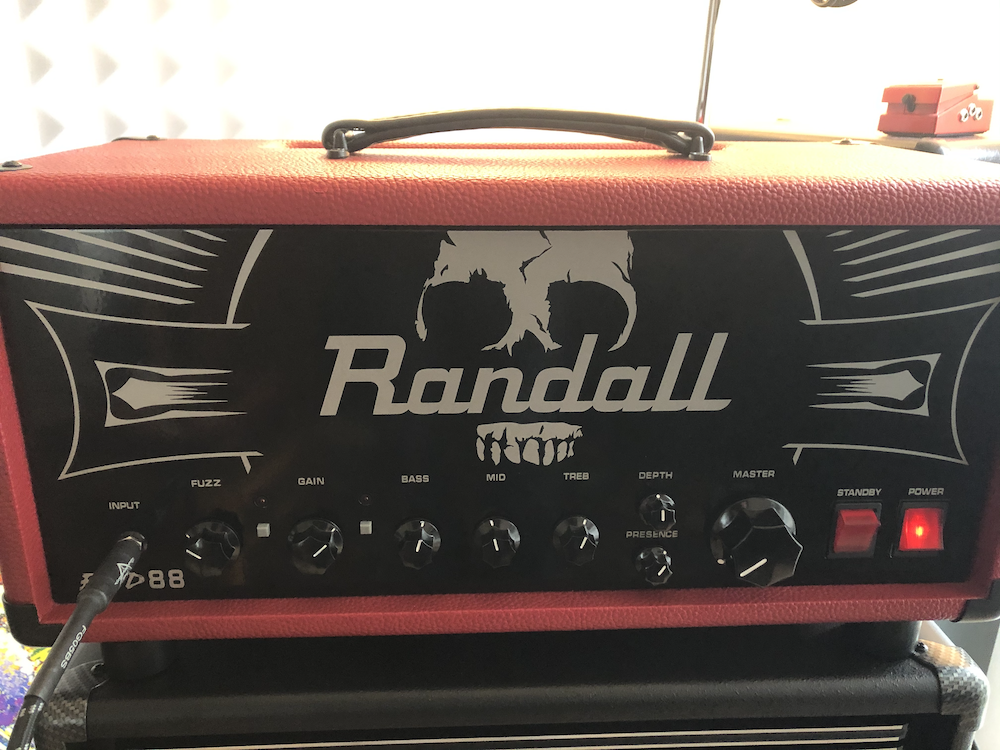
Then, more recently, listening to a few demos of Fortin designed amps, I started to be interested in the characteristics and the sound of these amps… I then started to check on affordable and available Fortin designed amps, starting with the ones from Randall, and listened to some Thrasher and Satan demos… One demo after the other, I got back to this EOD and it’s sound…
If you are looking for discretion and sobriety : abandon all hope, the front face of the amp has this big doom logo and the tolex is really RED : it is an amp made for distorted tone and the designer wanted you to know ! 😉
By the way, the front plate is plain steel.
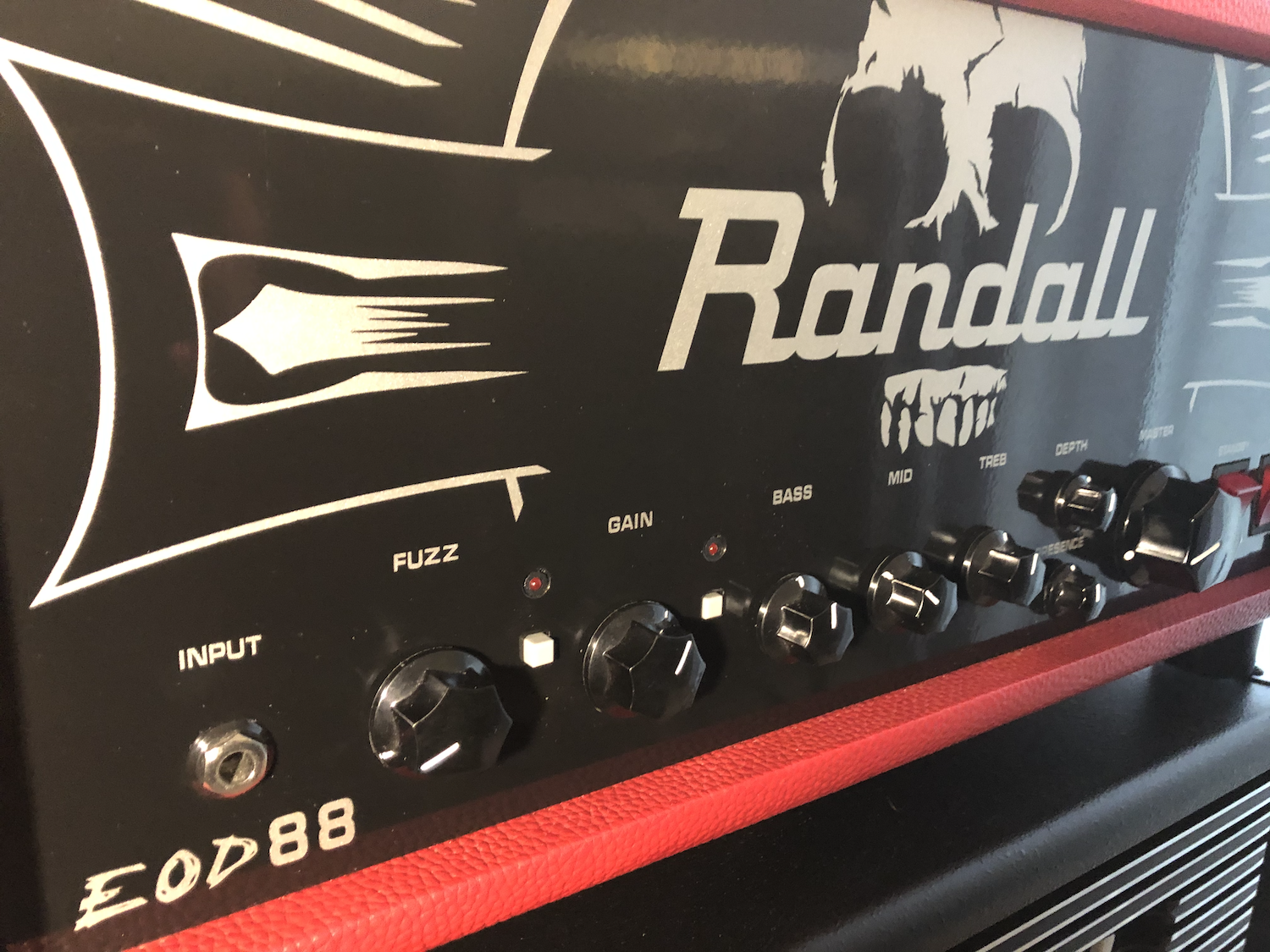
Main features of the amp :
- valve amp, 1 channel (or 1 and a half if you add the fuzz)
- 2 gain modes : normal and boost
- 1 embedded fuzz, that combines with gain
- 1 eq with bass, mids and treble
- 1 depth and 1 presence knob
- A big master knob
- 3 12AX7 tubes for the preamp
- 2 KT88 tubes for the power-amp (and the amp is rated … 88 watts)
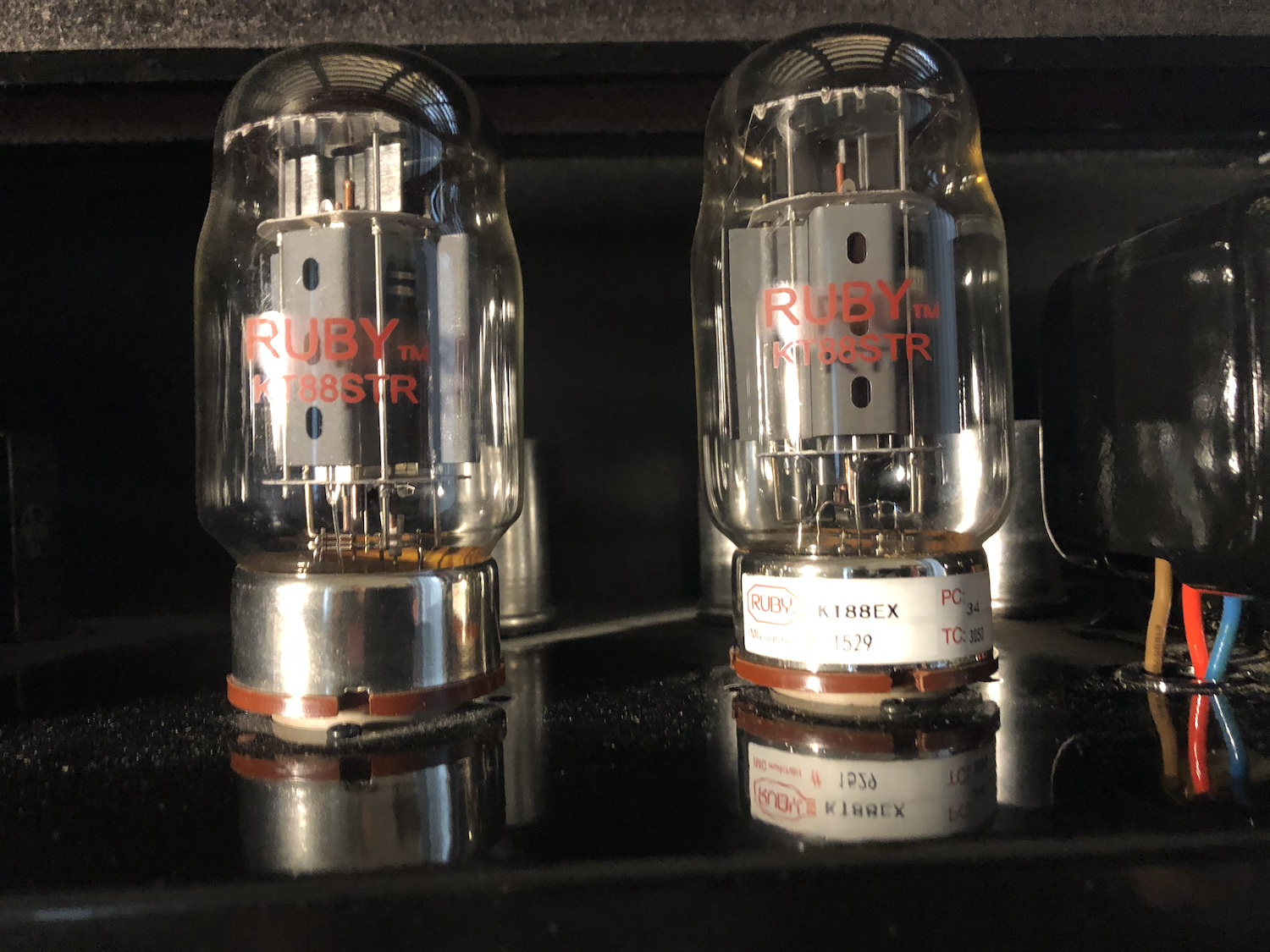
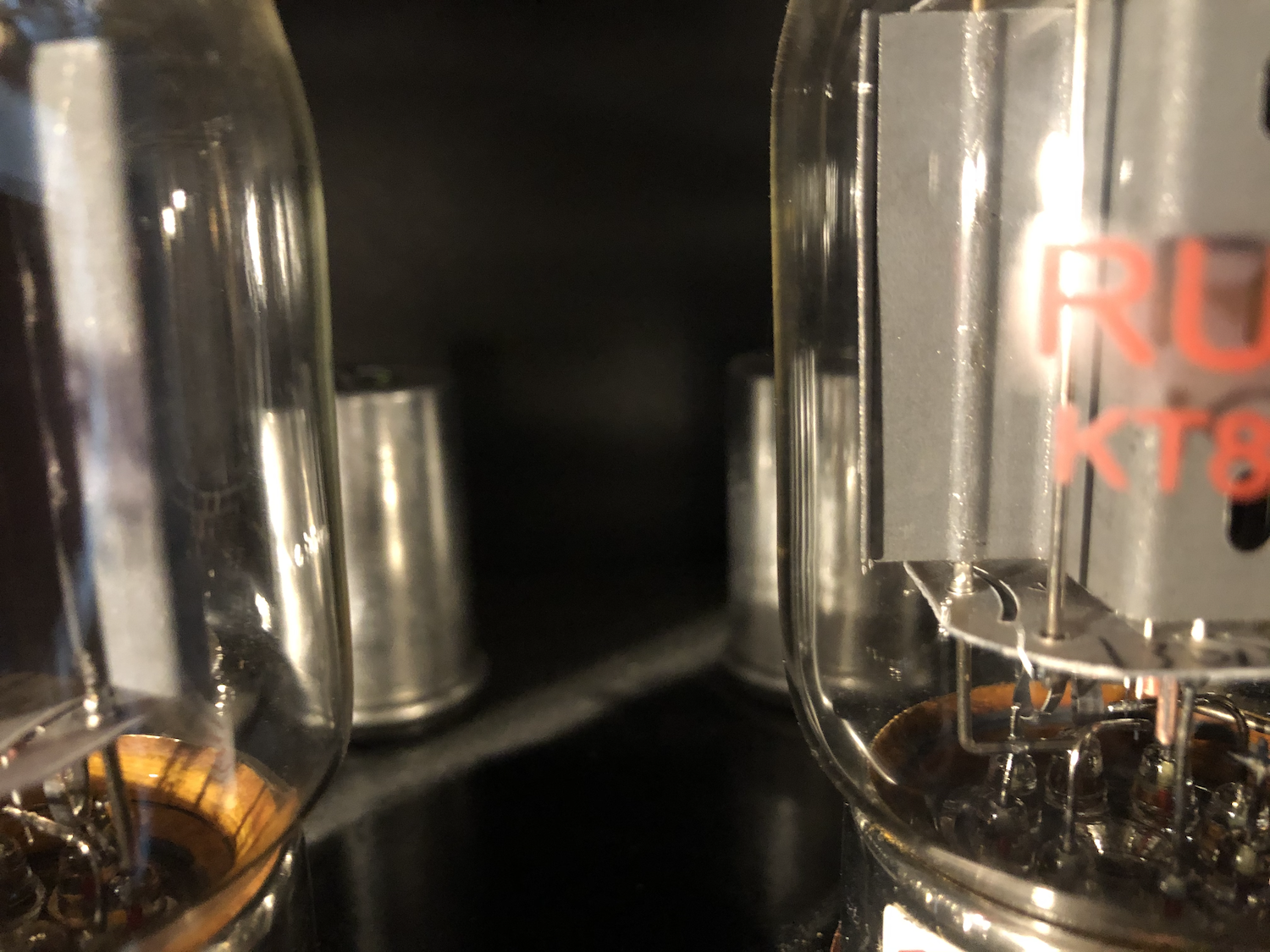
The amp is made in China and the quality build is very good. It has two large transformers that seem suited for the job.
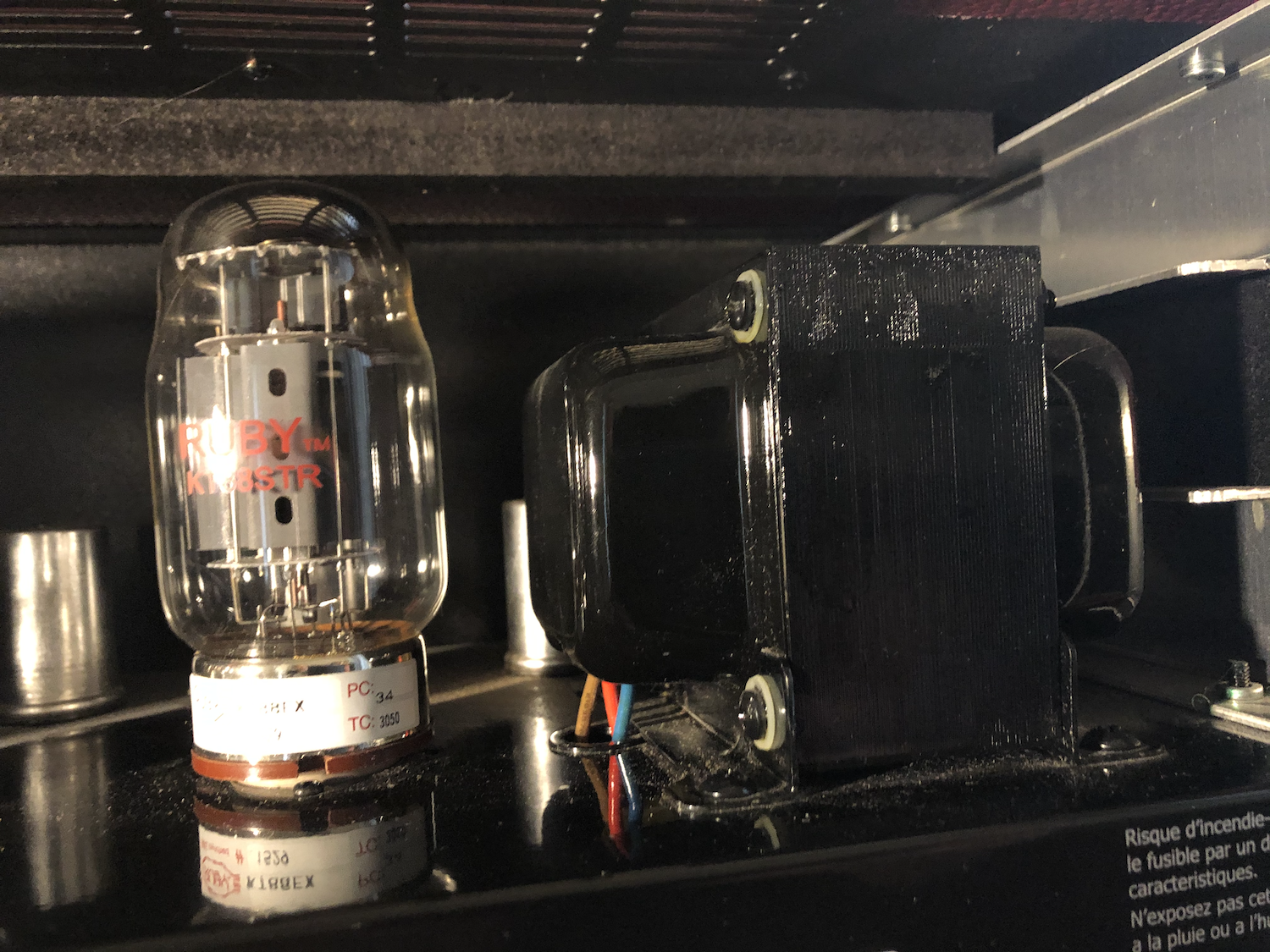
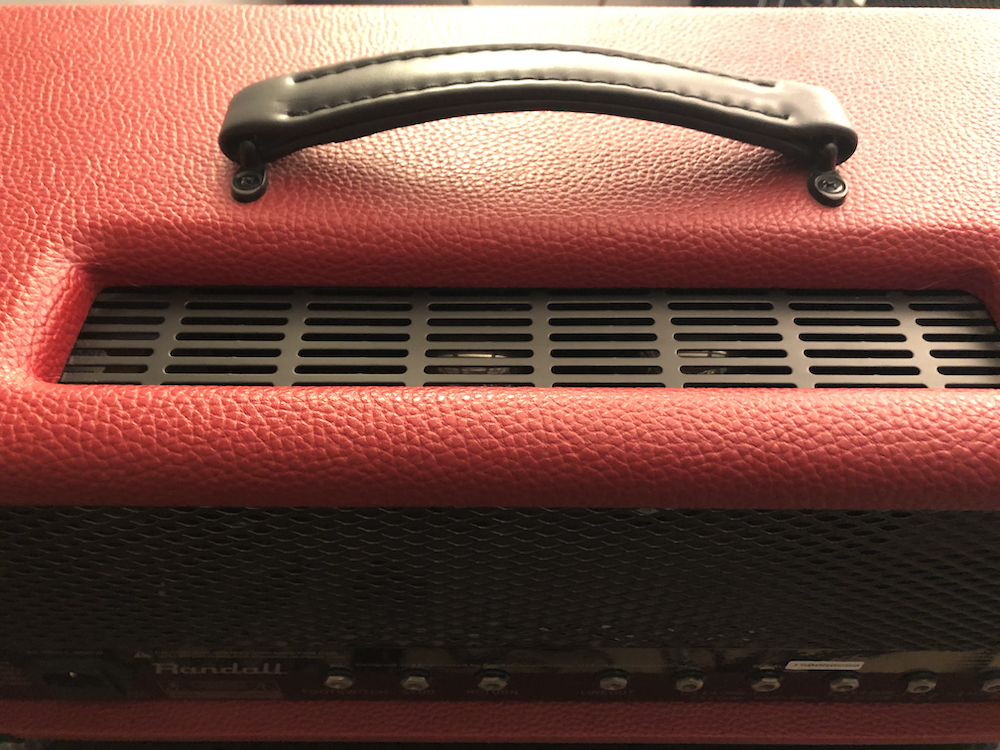
Weight and size :
- Approx. 15 kgs
- Dimensions : L:H:P 51,5 cm x 25,5 cm x 23,5 cm
On the back panel, you can access:
- The power plug, with a fuse trap
- a jack for the footswitch (comes with the amp, to control the fuzz and the boost mode)
- FX loop send and return jacks
- one line out (not tested yet)
- 5 cabs connections : 2×4 ohms, 2x 8ohms and 1x 16ohms
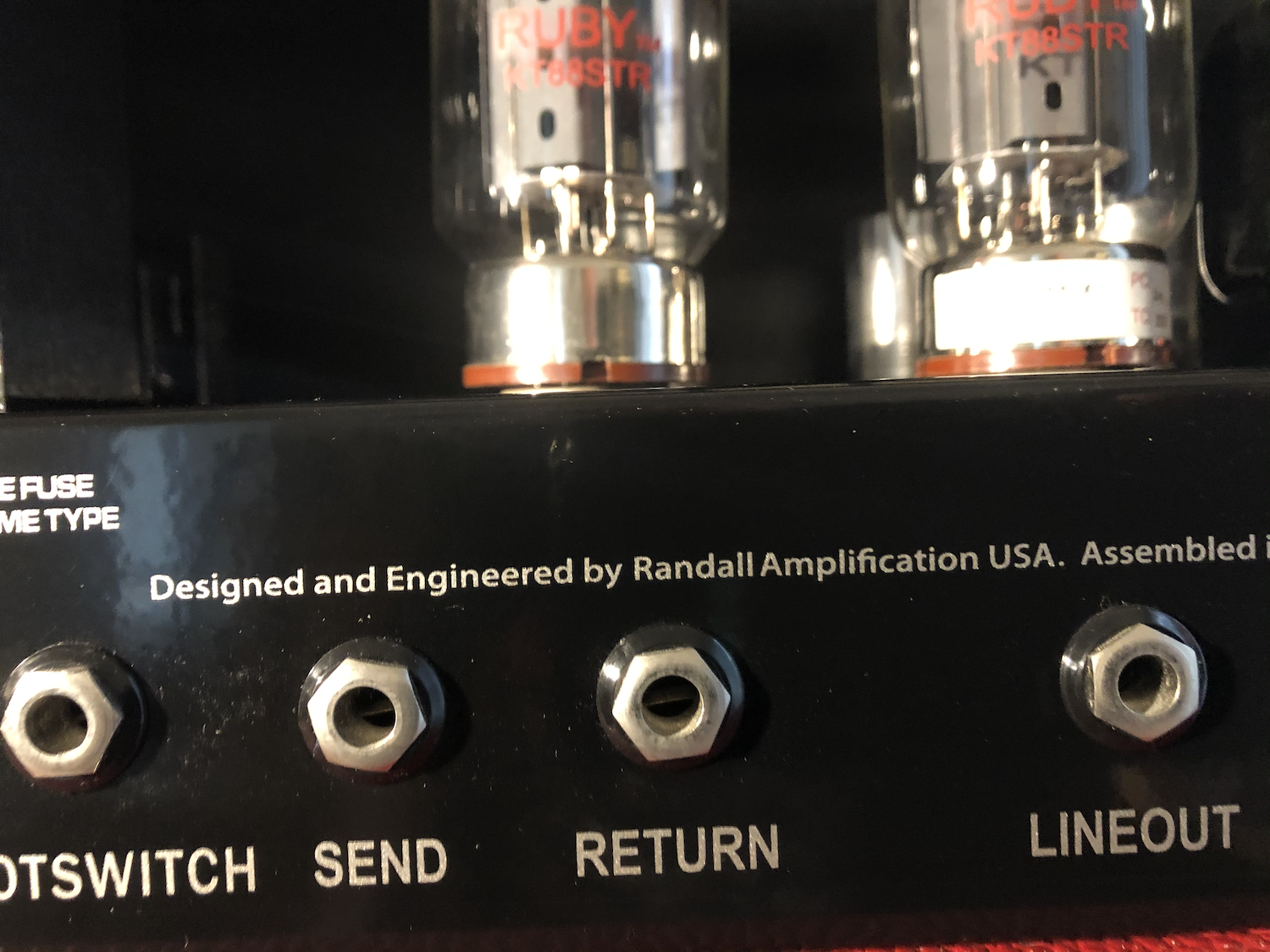
The tone
My main cab setup at the moment is based on a Zilla 212 Fatboy loaded with a WGS ET-65 and a WGS Vet30 (2 8 ohms speakers connected in serial).
Plugged-in the amp …. and WOW ! A thick -yet defined- distorsion with a lot of lows and low-medium, but not boomy. The distorsion can remain precise and defined -if you do not cranck up the gain -and without the fuzz, of course-. Treble can be strong and present but the amp is everything but harsh. KT88 valves are often used in HI-FI applications : we can guess that most of the distortion is coming from the preamp. The KT88 tubes provide a lot of clarity and definition (well, … it seems to me, if I compare the voicing to 6L6 or 6V6 amps).
While I did not pushed the amp very far in terms of volume, you hear very quickly that there is a lot of power and that this amp can get REALLY loud. The master remains precise and the voicing does not change much when raising the volume : it can be set to a fairly low level for bedroom use and produce a good sound. But even in a house, a load box is recommended in order take advantage of this amp. If you live in an apartment, you’ll definitively want to use a load box (else, you will make a lot of new friends in the neighborhood).
The gain reserve is important but not tremendous, and the gain structure will start to be compressed and squashed if you raise it too high. The amp supports very well overdrive pedals and produce a very good -and more defined- sound when paired with such pedals. They are not mandatory when using sharp pickups like EMG81 or EMG57, even if they will benefit also of overdrives. With passive or pickups with a lot of lows or scooped mids, I’d recommend to use one (if you are looking for a minimum of definition and attack). For doom/stoner/sludge you may not need the overdrives, but for many other applications they will provide the right level of clarity to feed the amp.
The distorsion is thick, full, and engaging the boost does not really change the voicing : it adds resonance and bass though, so I reiterate the overdrive advice again 😉
The sound signature of this amp is really to focus on lows and low-mids, and it has a sweet treble section compared to other amps. It is very interesting to play, and very forgiving : it will tolerate and mask my small timing mistakes or my approximate finger positions for example.
So, should it be only advised to stoner players, doom players and other sludge players with slow and fuzzy rhythms ? Well, I don’t think so, it can do much more than this and can be setup to produce a quite defined saturated tone : it can do thrash or groove façon Lamb Of God, even if some others amps might be better at this. Overdrive mandatory for this. For heavy metal riffs (think Sad But True, Metallica for exemple- ‘You want Heavy ?“), it is perfect ! For other fast and precise genres (fast thrash or death metal), it may not fit at all.
Regarding the fuzz : I am not a great fuzz user or player, I tested it and it gives… a fuzz sound 😉 The fuzz/gain interactions are interesting and I get similar sounds to the ones I get with my unique fuzz pedal (Okko Black Beast). The tone palette obtained by the fuzz / gain / boost settings seem quite large and interesting.
Can you get some cleans ? Yes, turn down the gain, raise the master and clean you go… The distorsion break-up is never really far, though..
A few demos
The samples below are recorded directly by miking a Zillacabs Fatboy with an ET-65 and a Vet30. The microphones used are an SM57 (cap-edge of Vet30) and a MD421 (cap-edge of ET-65). I included a recording with an NT1A (30 centimeters from the cab) to get an idea of the room sound.
Note : some samples have an exaggerated level of distortion for a proximity recording, and give a feeling of a dirty and undefined distortion. That is not the case at listening position.
Note 2 : I am a beginner guitar player, the samples are made to provide an idea of the amp tones, so remain magnanimous and kind in your listening…
The first samples below are recorded with the MD421/ET65 (left 80%) and SM57/VET30 (right 80%).
- Sample 1 : Drop C, SD AHB2, Maxon OD9, dist
- Sample 2 : Drop C, SD AHB2, Maxon OD9, dist
- Sample 3 : Drop C, SD AHB2, Maxon OD9, dist
- Sample 4 : D#/Eb , EMG 57, OD Glove, dist, HPF
- Sample 5 : D#/Eb , EMG 57, OD Glove, dist, HPF
- Sample 6 : D#/Eb , EMG 57, direct (no overdrive), dist boost, HPF
- Sample 7 : D#/Eb , EMG 57, Okko Black Beast (no fuzz), dist, HPF
- Sample 8 : Drop D, SH4, dist / boost / fuzz with different settings, HPF
- Sample 9 : Drop D, Juggernaut neck, gain low / master up, HPF (« cleans »)
Sample 10 and 11 : ET65 “only” – NT1A – « room sound »
- Sample 10 : D#/Eb , EMG 57, direct, dist boost, NT1A (« room »)
- Sample 11 : D#/Eb , EMG 57, direct, dist boost, NT1A , HPF (« room »)
Sample 1
Sample 2
Sample 3
Sample 4
Sample 5
Sample 6
Sample 7
Sample 8
Sample 9
Sample 10
Sample 11
Additional demos will be posted on the “Soundcheck” page : https://overdriven.fr/overdriven/index.php/soundcheck/
Conclusion
A formidable amp : a powerful distorsion with a massive tone, that can cover thrash (on overdrive), and of course doom, stoner and fuzzed / squashed sounds. The distorsion can remain defined if you are light on the gain and the amp really shines with slow riffs, with heavy power chords : you will shake the walls with a single power chord 😉
The tone is massive, with a lot of presence in the low and low-mids, without being muddy : this amp does the job in a beautiful way. The fuzz/gain association can be interesting but you don’t have to use the fuzz to have fun with this amp. The power reserve is tremendous.
I will post additional samples to test cab associations (IRs) and test the RAW out connector.
The cost was 1000-1200 Euros when launched : I could spot it at 600/700 Euros used, and I could find as well a new one on amazon.fr at 880 Euros (on March 2020,1)
Addendum
Added May 17, 2020
Changed the preamp tubes for testing. Here are -what I believe to be- the stock preamp tubes (bought it used).
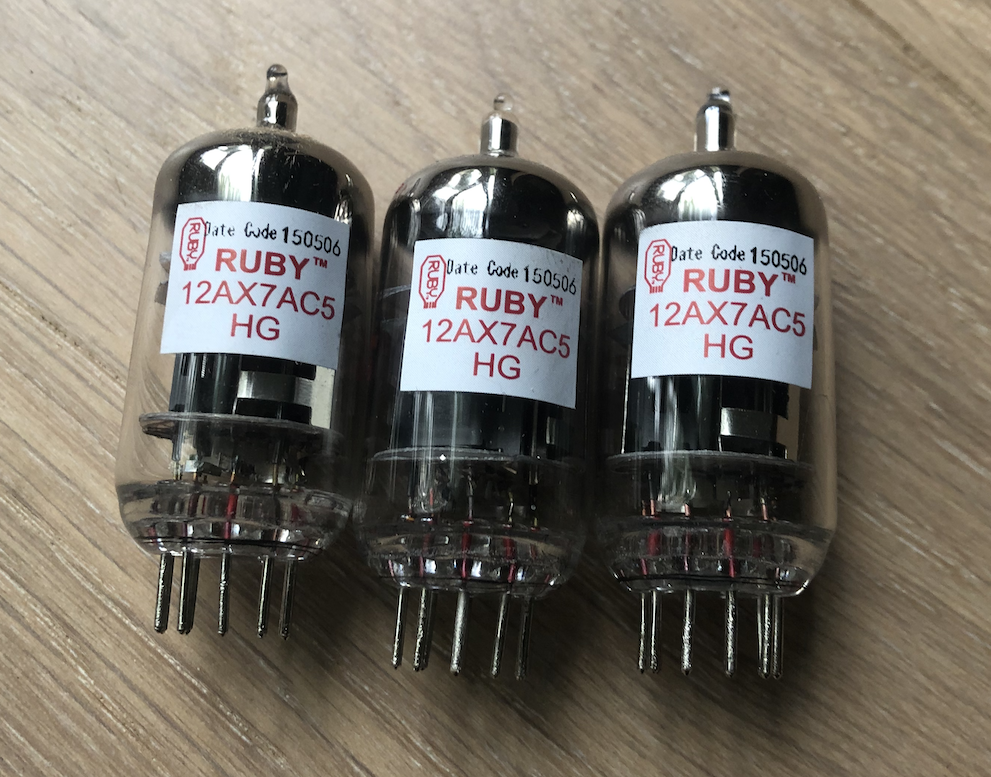
And here are the two transformers of the amp:
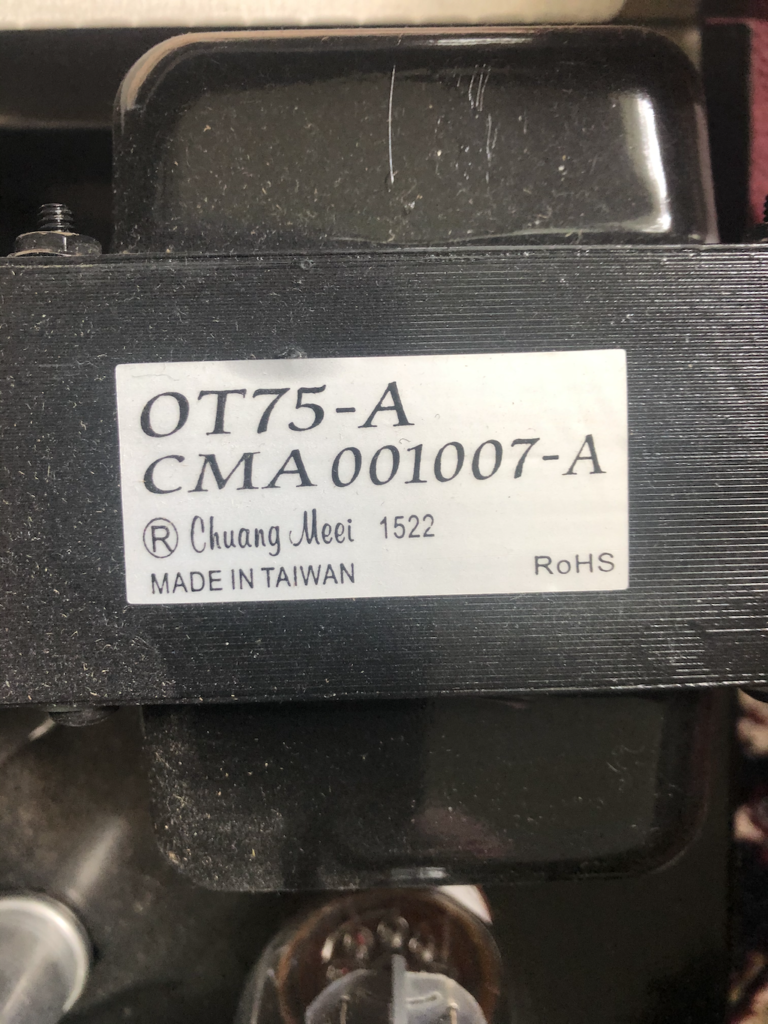
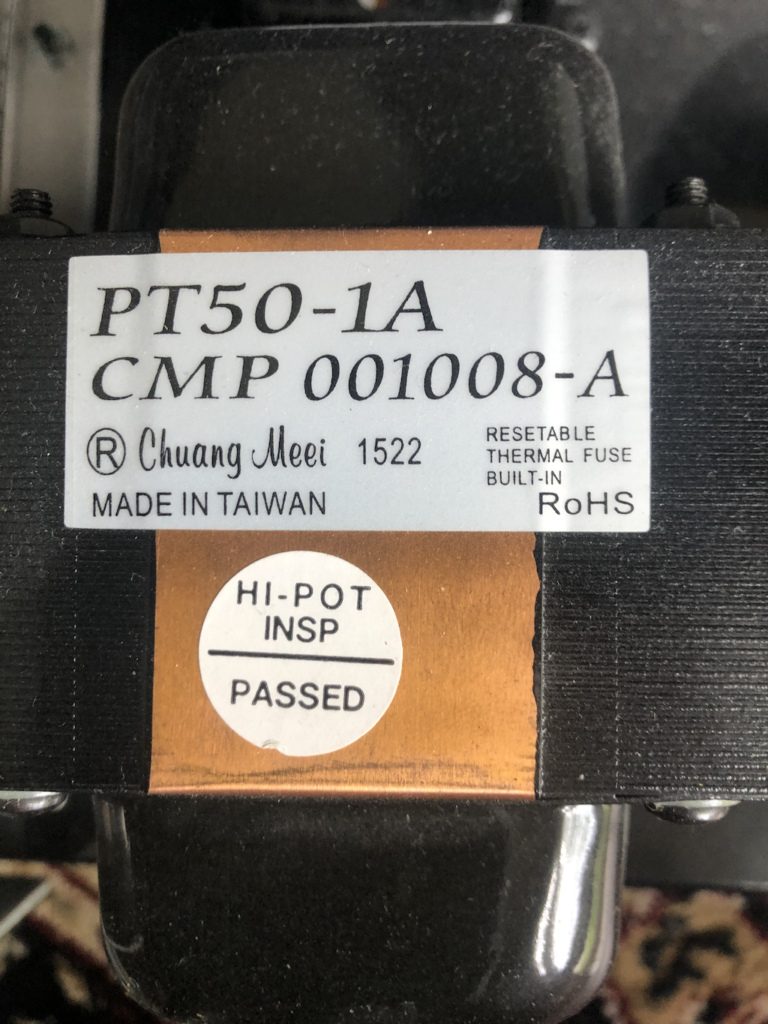
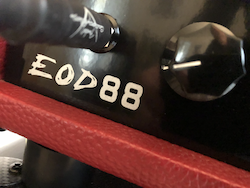
Leave a Reply